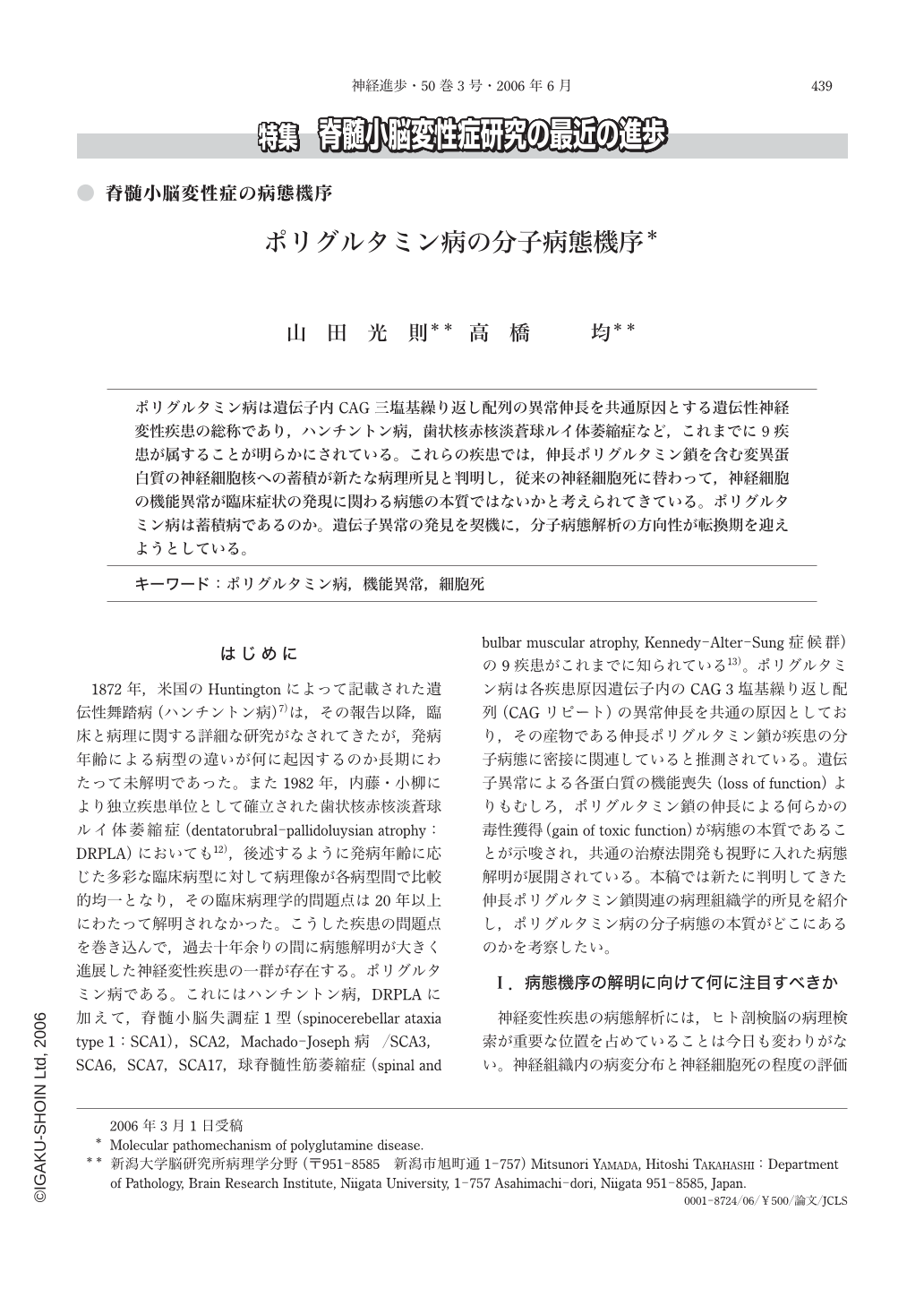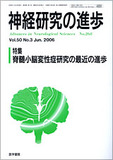Japanese
English
- 有料閲覧
- Abstract 文献概要
- 1ページ目 Look Inside
- 参考文献 Reference
ポリグルタミン病は遺伝子内CAG三塩基繰り返し配列の異常伸長を共通原因とする遺伝性神経変性疾患の総称であり,ハンチントン病,歯状核赤核淡蒼球ルイ体萎縮症など,これまでに9疾患が属することが明らかにされている。これらの疾患では,伸長ポリグルタミン鎖を含む変異蛋白質の神経細胞核への蓄積が新たな病理所見と判明し,従来の神経細胞死に替わって,神経細胞の機能異常が臨床症状の発現に関わる病態の本質ではないかと考えられてきている。ポリグルタミン病は蓄積病であるのか。遺伝子異常の発見を契機に,分子病態解析の方向性が転換期を迎えようとしている。
Polyglutamine diseases are the family of hereditary neurodegenerative disorders that are caused by the expansion of a CAG repeat coding for polyglutamine, and include Huntington's disease and dentatorubral-pallidoluysian atrophy(DRPLA). It has been recognized that intranuclear accumulation of mutant proteins with expanded polyglutamine stretches is a novel pathological characteristic of neurons, and involves much wider brain regions than lesions previously evaluated by neuron loss. In DRPLA, this nuclear pathology affected various nervous system regions, such as the cerebral cortex, thalamus, substantia nigra and pontine nuclei in addition to the dentatorubral and pallidoluysian systems. The degree of immunohistochemical staining and the frequency of this nuclear pathology vary dramatically among DRPLA patients depending on the sizes of CAG repeat. This dynamic pathology may be responsible for a variety of phenotypes observed in DRPLA. The expansion of potential CNS lesions assessed by this nuclear pathology is also demonstrated in Huntington's disease and Machado-Joseph disease. In polyglutamine diseases, not neuronal cell death, but nuclear dysfunction of neurons may play a pivotal role in the pathogenesis relating to the development of clinical phenotypes.

Copyright © 2006, Igaku-Shoin Ltd. All rights reserved.


